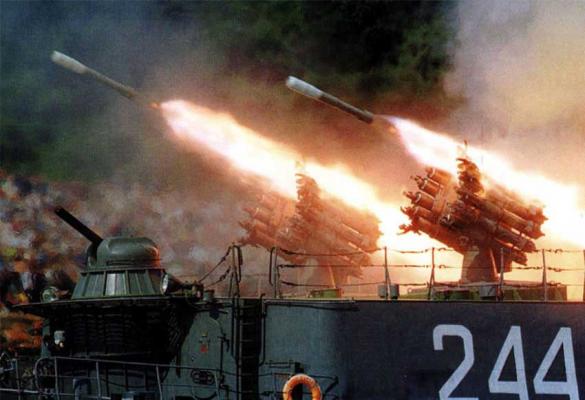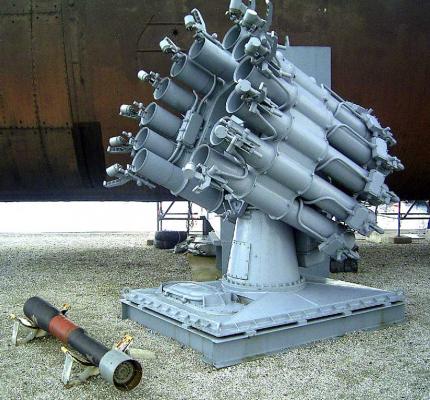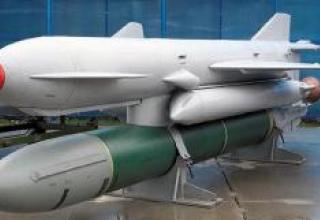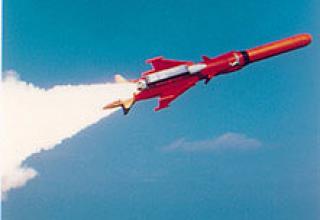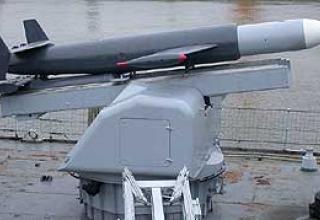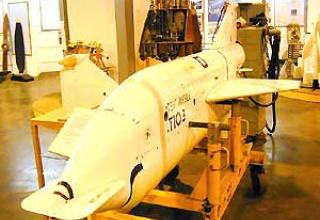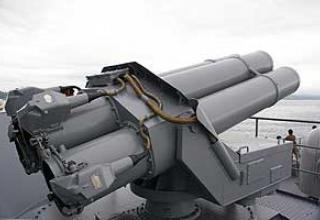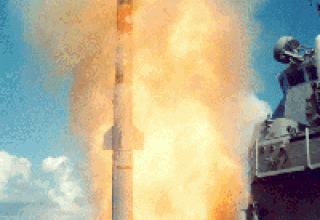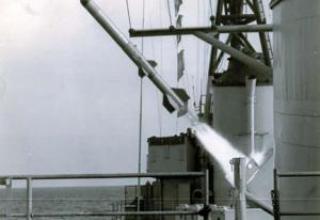The RPK-8 anti-submarine missile complex is designed to protect surface ships from submarines, as well as to defeat the ship's torpedoes and submarine subversives.
The RPK-8 is the result of a deep upgrade of the widely used Smerch-2 anti-submarine system adopted by the USSR Navy in 1961. The developer of the RPK-8 complex is the Federal State Unitary Enterprise "State Research and Production Enterprise "Splav" (Tula).
The RPK-8 differs from its predecessor in the use of a new anti-submarine missile with a guided, self-guided gravity projectile and modified fire control system devices. At the same time, the new system maintained a high level of continuity with its prototype. The RPK-8 allows for the firing of unguided RPK-60 deep-rocket bombs of the Smerch-2 complex. The RBU-6000 rocket launcher from the same complex is used as a launching device.
The complex was adopted by the order of the Minister of Defense N 055 of 26.11.91. As a result of implementation of the RPK-8 complex, the Navy received a highly effective means of fighting enemy submarines in the close area of the ship 8-10 times superior to the capabilities of the Smerch-2 complex.
At present the RPK-8 complex is a part of the armament of the 11540 project "Undaunted" and "Yaroslav the Wise" patrol ships. It is exported under the designation RPK-8E and is part of the armament of new Indian Shivalik-class frigates.
Composition:
The complex consists of the following fixed assets:
- 212 mm anti-submarine missile 90P;
- 212-mm MG-94E rocket;
- RBU-6000 rocket launcher (see photo 1, photo 2, photo 3);
- 60UP charging, feeding and storage device;
- firing control devices;
- ground equipment.
The 90P rocket (see photo) is designed to deliver a gravity self-guided submarine projectile to the location of the submarine. It can also be used as an anti-torpedo and anti-subversive weapon. The 90P anti-submarine missile consists of a missile part, a head part with a separation system and a 90SG gravity submarine missile (see diagram). After driving the missile, the 90SG gravity submarine is separated from the missile (see picture), which actively hydroacoustically locates the surrounding space and after "capturing the target" - controlled movement on the target and its defeat. In order to ensure wide implementation of the RPK-8 complex in 2004. The State Unitary Enterprise "Splav" has developed an upgraded version of the rocket, which received the designation 90P1.
The following missiles are used for training firing: 90P PR missile with inert equipment of gravity submarine projectile combat unit and 90PRN missile with submarine projectile overall layout.
The MG-94E reactive projectile (head designer of ZAO Akvamarin) is a carrier of a detachable hydroacoustic torpedo resistance module (see photo). The mass of the projectile is 113 kg, maximum range is 4300 m. The hydroacoustic countermeasure module ensures the retraction of torpedoes by affecting the homing system. The 90P and MG-94E shells use a single missile part.
The RBU-6000 is designed to fire 90P anti-submarine missiles and RGB-60 deep-rocket bombs in multiple and single rounds. The RBU-6000 is a stationary, two-plane launcher with twelve radially positioned barrels. Special hinged brackets are located on the front and rear sections of the RBU-6000 barrels. The front bracket is designed to accommodate the mechanism and plug connectors for firing preparation and to set the depth of the RGB-60 bomb fuse, the rear bracket is designed to launch the 90P or RGB-60 missile's marching engine. For the missile 90P1 front bracket is not used all the prelaunch information is transmitted to the rocket induction method. Charging of the launcher is done automatically by feeding anti-submarine missiles from the ship's hold with the 60UP device. After all the missiles are exhausted, the unit automatically switches to the "charging" position - the package of barrels is lowered by 90° and is successively turned to charge the next barrel. It is possible to upgrade the RBU-6000 with an electric power drive on a modern element base. The Peleng Design Bureau (Yekaterinburg) has developed a new control equipment for the power drive ESP-37U, which can be used to upgrade the plant.
The device of charging, giving and storage 60UP, is intended for storage of rockets in cages of the conveyor located in the bottom premise, transportation of rockets to the lift, lifting of rockets and charging-discharging of starting installation. The capacity of the conveyor is 25 or 61 missiles. Height of lifting of cargo - 5825 or 14225 mm, weight 60UP - 4700kg. Charging of starting installation automatic.
Devices of management of shooting (PUS), consist of:
- a command device with a control room, calculator and monitor;
- a device for generating and entering data into the launcher;
- Device of dangerous zones, which provides blocking of executive circuits when the installation is located in dangerous for shooting areas.
Weight of control devices - 180 kg.
The target is detected by the ship's hydroacoustic system, which determines its parameters and transmits them to control devices for ballistic firing preparation. The PUS calculator generates angles of horizontal and vertical guidance of the RBU. Electric power drives direct the units at continuously produced angles and keep them at these angles during firing. The RPK-8 with a salvo of one launcher provides hitting of submarines of all types with a probability of 80% at ranges of 4.3 km and depths up to 1000 meters. The combat use of the complex is ensured in various climatic conditions within the temperature range of -30 to +50°C and at sea disturbance, which is acceptable for combat use of the defended ship.
Characteristics:
| Depth of defeat, m: - submarines - torpedoes and saboteurs |
up to 1000 4-10 |
| Range of fire, m: - maximum - minimum |
4300 600 |
| Probability of hitting the submarine in one volley | up to 0.8 |
| Combat readiness of the complex from the moment of detection of a target, no more, s | 15 |
| Weight of the complex without ammunition, kg | around 9000 |
| 90P Missile | |
| Caliber, mm | 212 |
| The length of the rocket, mm | 1832 |
| Weight, kg | 112.5 |
| Mass of gravitational projectile, kg | 67 |
| Weight of BB, kg | 19.5 |
| RBU-6000 | |
| Caliber guide, mm | 213 |
| Number of guides, pcs. | 12 |
| Maximum elevation angle provided by electric power drive, deg | +60 |
| Maximum angle of descent, deg | -90 |
| Angle of vertical guidance, deg: - to shoot at maximum range - for minimum range shooting |
+46 +8.5 |
| Maximum firing sector, deg | 340 |
| Weight of uncharged unit, kg | not more than 3,500 |
| Swimming radius, mm | not more than 1450 |
| Maximum overall dimensions of the installation, mm: - above deck - below decks |
2600х2140 760х1300 |
Testing:
In 2017, Valentina Gordeyeva was awarded the S.I. Mosin Prize for her work on "Modernization of antisubmarine systems of water area protection ships (Apr.1124, 1124M) for the application of 90P1 anti-submarine missile and creation of production and technical base for its serial production" (work presented by NPO SPLAV).
Sources:
- Люди, годы, залпы. 60 лет ФГУП “ГНПП “Сплав”/ ФГУП “ГНПП “Сплав”: составитель Е.М. Мартынов, под редакцией Н.А. Макаровца; ред коллегия: Г.А. Денежкин, Р.А. Кобылин, Г.И. Блинов. – Тула: ОАО “Тульская типография”, 2009.
- Премия имени С.И. Мосина: из века в век. – М.: Издательский дом «Оружие и технологии», 2018. – С. 213.
- ФГУП "Государственное научно-производственнон предприятие "СПЛАВ"
- http://commons.wikimedia.org
- Артиллерийский завод N9 РБУ-6000
- ВМФ России проявил заинтересованность в модернизации реактивной бомбометной установки РБУ-6000 ИТАР-ТАСС
